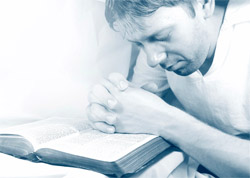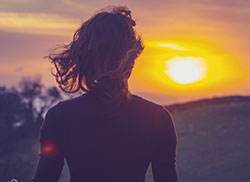Current Race Tensions Reflect 1960’s Detroit Rebellion
A Special Thanks to The Charles H. Wright Museum of African American History
For more information please contact Patrina Chatman, Curator of The Wright Museum, at pchatman@thewright.org
On July 23rd, 1967, one of the most destructive riots in our nation’s history took place in Detroit Michigan. Many were killed and the city was left in ruins with a community uncertain if their lives could ever be rebuilt. My father, Detroit photojournalist, James D. Wilson, captured the unfolding events. The results are displayed at the Charles H. Wright Museum of African American history in a photograhic exhibit called, “Say it loud: Art, History, Rebellion.” Museum curator, Patrina Chatman.
Patrina shares, “He documented what was going on and he tried to make the city leaders understand what was happening, but they didn’t quite get it. It kind of fell on deaf ears but he left us a legacy.”
The cataclysmic events that took place over five-days are forever etched in the minds of those who experienced it over 53 years ago. CBN spoke with two prominent Detroit pastors who were both nine years old when the civil unrest happened.
Reporter Michelle Wilson asks, “What was the thing that you remember that really scared you the most or frightened you the most?”
Pastor Marvin Winans recalls, “Well when you walk down the street and you see soldiers with guns and they're drawn, it's like they're out, you see them; that's not normal. And you see tanks riding down the street; that's not normal.”
Bishop Charles Ellis remembers, “It was still a dangerous time because we had guns and automatic weapons and military people in the city of Detroit.’
What led up to the tragic loss of the lives of mostly young African American men during the 1967 civil unrest? Some say unfair housing practices, with Blacks being forced into crowded poor neighborhoods and segregation, among other things. At the top of the list, an unfair justice system at all levels especially from a certain group of police officers.
Charles Ferrell says, “There was a group of police officers called The Big Four, which habitually would approach African American males. In other words, it wasn't possible for African Americans to converge in small groups without being assaulted by Detroit police.”
One incident in particular pushed the Black community over the edge.
Charles Ferrell recalls, “The rebellion was sparked by police raiding on a so-called blind pig, an after-hour establishment.”
From there people took to the streets in protest. Over five days, 2,000 buildings were looted and burned including Black owned businesses. The total property damage was close to 45 million dollars. 7,000 arrests were made. Hundreds of families were left homeless with more than 1,000 innocent bystanders wounded and 43 people were killed. An investigation ordered by president Lyndon Johnson cited racism, discrimination, and poverty as the causative factors. After the rebellion, city officials were determined to right the wrongs of the past and many residents were hoping for a new Detroit. James Wilson captured the rebuilding of Detroit. The only photo of its kind in the exhibit.
Patrina Chatman shares, “It’s a powerful image. And this shows Black people pitching in shoveling up and beginning to start their lives anew. The rebuild.”
With the rebuilding of Detroit came improvements in the economy, fair housing policies, and even the election of its first Black mayor, Coleman A. Young who opened the door for a more diverse police force. But do the threads of systemic racism still exist in Detroit and around the world? Many still believe it does. The death of George Floyd, an African American man killed by police during an arrest ignited a global powder keg of protests against police brutality and other social injustices.
Bishop Charles Ellis shares, “When we look at Black Lives Matter and we look at the atrocities that seem to be happening on film between the police and the urban community, you ask yourself the question, ‘Are we returning back to where we were?’ And then some people say, ‘Bishop, it's never changed.’ I'm like, ‘Wow!’”
Reporter Michelle Wilson asks, “What do you think, in all honesty, is it going to take for us to come together in unity; police community, African-American community, not only starting in Detroit, but just within our nation?”
Charles Ferrell shares, “I think actually moving where law enforcement are not using bullets, but using another type of weaponry that would not kill someone but could sedate them, I think, would be a very positive development in terms of how do we treat each other in this country the value of human life.”
Several religious leaders are praying to correct the mistakes of the past in order to move toward a unified future where we may all live together in peace.
Bishop Charles Ellis says, “The Bible says, ‘If my people who are called by My name would humble themselves and pray and seek My face and turn from their wicked ways, then will I hear from heaven, forgive their sins, and heal their land.’ I believe the best prayers focus around you being better and not everybody else changing. So, Lord change me.”
Reporter Michelle Wilson asks, “What would Jesus do in relation to the issue of Race. If He was walking this earth today. What do you think He would do in order to help to bring us together?”
Pastor Marvin Winans shares, “He would do what He’s already done. ‘God took one blood and made all nations.’ I think if the church understands that, what God did was for everyone, ‘For God so loved the world.’ It didn't say God so loved the Hebrews. It said He loved the world. Now, the church, I believe, has to anchor that.”






